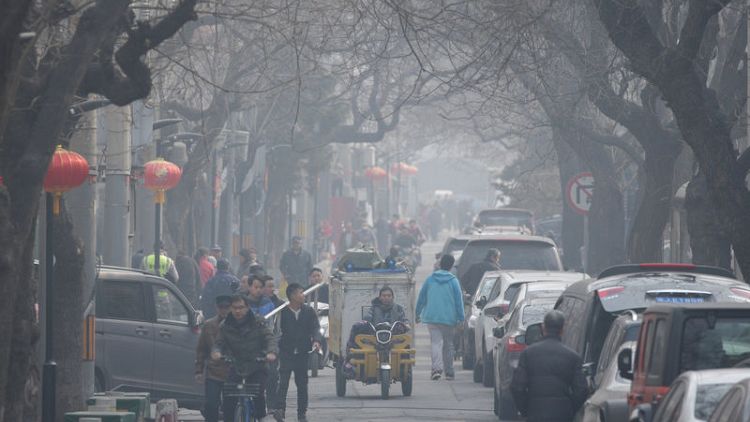SHANGHAI (Reuters) - China's average concentrations of lung-damaging small particles known as PM2.5 rose by 5.2 percent in the first two months of the year, the country's environment ministry said on Thursday, casting doubt over its ability to meet winter targets.
The nation's average PM2.5 readings came in at 61 micrograms per cubic metre for January and February, according to a Ministry of Ecology and Environment survey of 337 cities, with only 83 registering the national standard of 35 micrograms.
The 28 cities in the key pollution control region of Beijing-Tianjin-Hebei saw PM2.5 levels soar 24 percent to an average of 108 micrograms over the two-month period, more than 10 times higher than the safe level of 10 micrograms as recommended by the World Health Organization.
Meanwhile, the 11 cities of the Fenwei Plain, another major smog control zone, saw their PM2.5 numbers surge by 26.6 percent over the period, hitting an average of 119 micrograms.
China forced smog-prone northern cities to implement special emissions restrictions over the October 2018-March 2019 period in order to offset rising levels of coal combustion from state heating systems during the winter.
But Reuters calculations based on official data showed that PM2.5 readings in the 39 key northern cities still rose 13 percent over the October-February period.
The 39 cities are under pressure to make year-on-year PM2.5 cuts of around 3 percent from October to March, but Reuters calculations show that only three - Changzhi and Luliang in Shanxi province, and Jining in Shandong - were on course to meet their targets at the end of last month.
The government has previously blamed unfavourable weather conditions for the poor air quality over the period, saying that "a weak El Nino effect" and a subsequent increase in temperature and humidity has made it harder to disperse emissions.
(Reporting by David Stanway; Editing by Tom Hogue)
